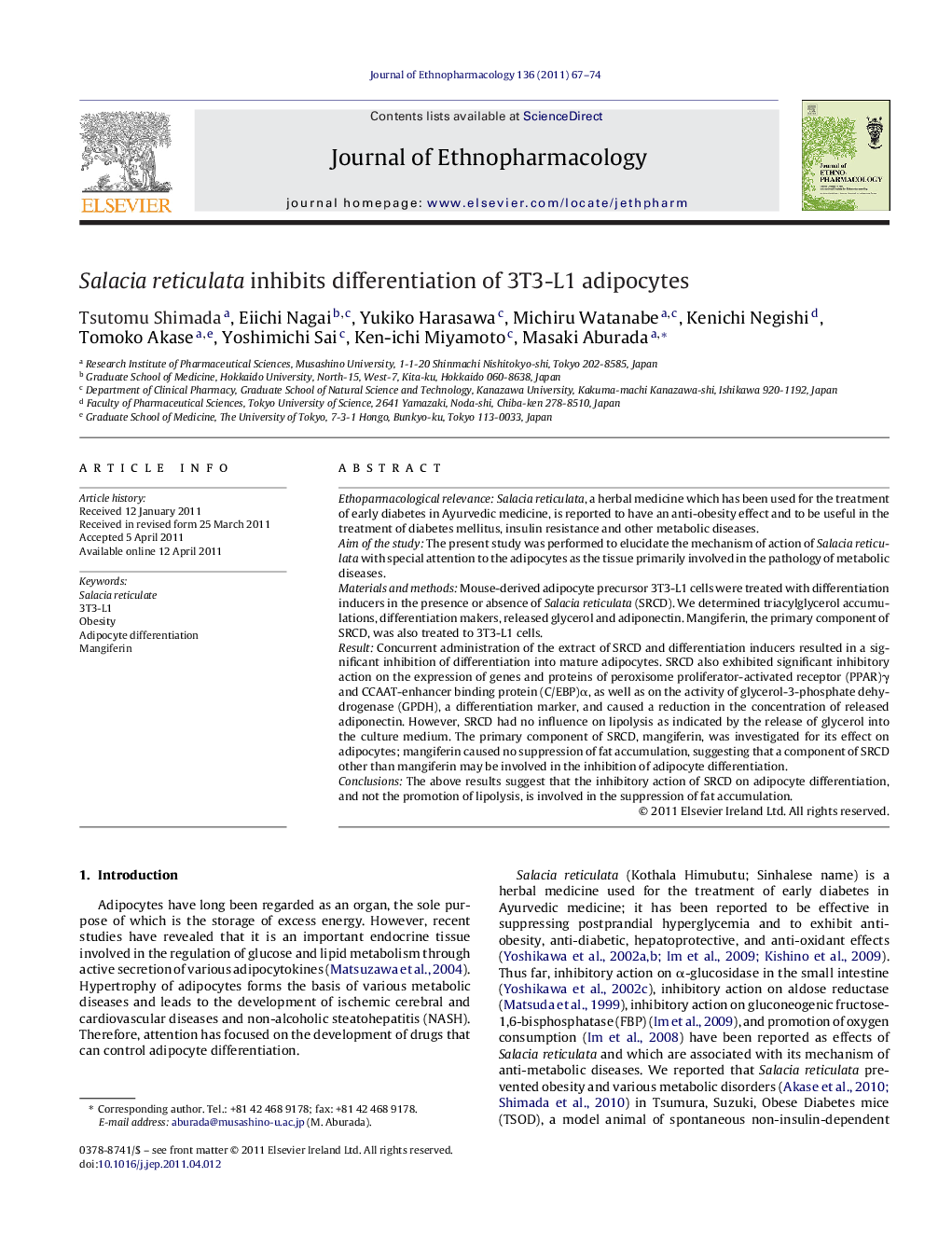| Article ID | Journal | Published Year | Pages | File Type |
|---|---|---|---|---|
| 2545703 | Journal of Ethnopharmacology | 2011 | 8 Pages |
Ethoparmacological relevanceSalacia reticulata, a herbal medicine which has been used for the treatment of early diabetes in Ayurvedic medicine, is reported to have an anti-obesity effect and to be useful in the treatment of diabetes mellitus, insulin resistance and other metabolic diseases.Aim of the studyThe present study was performed to elucidate the mechanism of action of Salacia reticulata with special attention to the adipocytes as the tissue primarily involved in the pathology of metabolic diseases.Materials and methodsMouse-derived adipocyte precursor 3T3-L1 cells were treated with differentiation inducers in the presence or absence of Salacia reticulata (SRCD). We determined triacylglycerol accumulations, differentiation makers, released glycerol and adiponectin. Mangiferin, the primary component of SRCD, was also treated to 3T3-L1 cells.ResultConcurrent administration of the extract of SRCD and differentiation inducers resulted in a significant inhibition of differentiation into mature adipocytes. SRCD also exhibited significant inhibitory action on the expression of genes and proteins of peroxisome proliferator-activated receptor (PPAR)γ and CCAAT-enhancer binding protein (C/EBP)α, as well as on the activity of glycerol-3-phosphate dehydrogenase (GPDH), a differentiation marker, and caused a reduction in the concentration of released adiponectin. However, SRCD had no influence on lipolysis as indicated by the release of glycerol into the culture medium. The primary component of SRCD, mangiferin, was investigated for its effect on adipocytes; mangiferin caused no suppression of fat accumulation, suggesting that a component of SRCD other than mangiferin may be involved in the inhibition of adipocyte differentiation.ConclusionsThe above results suggest that the inhibitory action of SRCD on adipocyte differentiation, and not the promotion of lipolysis, is involved in the suppression of fat accumulation.
Graphical abstractFigure optionsDownload full-size imageDownload as PowerPoint slide
